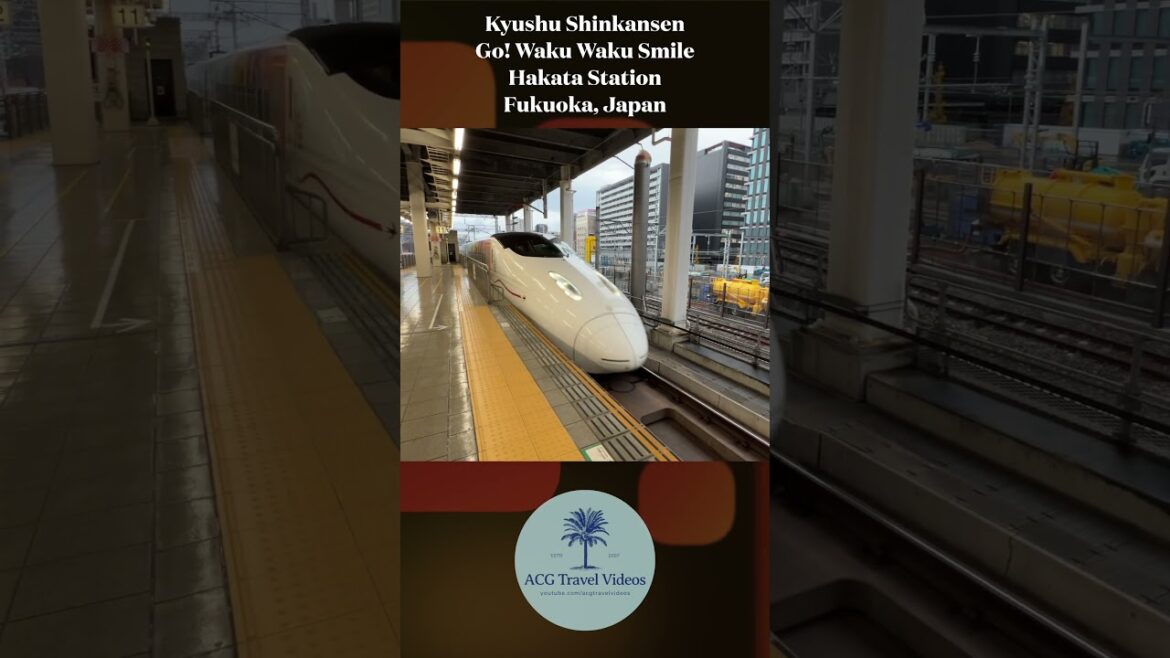Kyushu Shinkansen – Go! Waku Waku Smile – Hakata Station – Fukuoka, Japan 2
The “JR Kyushu GO! Waku Waku Smile Shinkansen” refers to a specific train service featuring the 800 Series train set, designated as U009. This Shinkansen (bullet train) service operates within the Kyushu region of Japan, offering travelers an exciting and enjoyable experience.
The term “Waku Waku” in Japanese conveys a sense of excitement or thrill, and it is aptly used to describe this special Shinkansen service. The 800 Series train sets are known for their distinctive design and comfortable features, providing passengers with a pleasant journey while enjoying the scenic landscapes of Kyushu.
Hakata Station (博多駅, Hakata-eki) stands as a prominent railway hub located in Hakata-ku, Fukuoka, Japan. As the largest and busiest railway terminal in Kyushu, it serves as a vital gateway for travelers journeying from Honshu to various cities in Kyushu via rail. The San’yō Shinkansen, originating from Osaka, concludes its journey at Hakata Station.
In 2011, a significant reconstruction project transformed the station. The original main building was replaced with a larger and more modern station building, complete with additional office spaces and platforms. This redevelopment was spurred by the extension of the Kyushu Shinkansen from Hakata to Shin-Yatsushiro Station, continuing its route southward to Kagoshima-Chūō Station. The revamped station includes notable features such as a Hankyu Department Store, marking its first branch in Kyushu, along with various other premier retailers like Tokyu Hands.
Fukuoka, the sixth-largest city in Japan, holds the distinction of being the second-largest port city after Yokohama and serves as the capital of Fukuoka Prefecture. Nestled along the shores of Hakata Bay, the city has historically thrived as a hub for international commerce. Fukuoka’s strategic location has earned it the reputation as the gateway to Japan, being the closest point to the Asian mainland among the country’s main islands.
Throughout its history, Fukuoka has developed a unique local culture and dialect, influenced by cross-cultural interactions and its geographical distance from major political and social centers such as Kyoto, Osaka, and later, Edo (Tokyo). The city gained prominence during the Yamato period, contributing to its distinctive identity.
Fukuoka, with its vibrant cultural heritage and economic significance, is the most populous city on Kyūshū island, followed by Kitakyushu. As the largest city and metropolitan area west of Keihanshin, it received government ordinance designation on April 1, 1972. Greater Fukuoka, part of the heavily industrialized Fukuoka–Kitakyushu zone, boasts a population of 2.5 million people as per the 2005 census.
Notably, by 2015, Fukuoka emerged as Japan’s sixth-largest city, surpassing the population of Kobe. In July 2011, Fukuoka even exceeded the population of Kyoto, marking a historic milestone as the first city west of the Kansai region to surpass Kyoto’s population since its founding in 794.


AloJapan.com